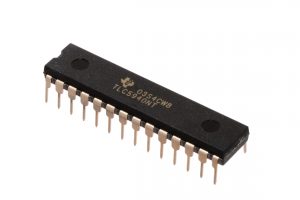 LEDs, or light-emitting diodes, produce light when current is run through semiconductor materials. In order for this to happen, LEDs need drivers to convert higher voltage, alternating current to lower voltage, direct current. LED drivers control the voltage and current flowing through the circuit at rated levels, protecting the LEDs from voltage and current fluctuations that can damage the LEDs.
LEDs, or light-emitting diodes, produce light when current is run through semiconductor materials. In order for this to happen, LEDs need drivers to convert higher voltage, alternating current to lower voltage, direct current. LED drivers control the voltage and current flowing through the circuit at rated levels, protecting the LEDs from voltage and current fluctuations that can damage the LEDs.
Today’s market size shows the revenue generated from LED driver sales globally in 2015 and projected for 2021. According to the U.S. Department of Energy, LED residential lighting is 75% more energy efficient than incandescent bulbs and lasts 25 times longer. Increased demand for LED lighting in retail establishments, office complexes, and residences along with demand for LED streetlights is expected to drive the growth in the LED driver market through 2021. China’s and India’s recent focus on energy efficiency is expected to lead to a growth in the LED driver market for outdoor and traffic lighting. As rapid urbanization continues in several Asia Pacific countries, infrastructure demands will also provide a growing market for LED drivers.
Geographic reference: World
Year: 2015 and 2021 projected
Market size: $4.75 billion and $19.03 billion respectively
Sources: “LED Driver Market Size & Share to Exceed $19.03 Billion by 2021, Globally,” Nasdaq GlobeNewswire Press Release, January 12, 2018 available online here; “Understanding LED Drivers,” 1000Bulbs.com, May 2014 available online here; Maria Guerra, “5 Different Ways to Use LED Drivers, ” Electronic Design, September 15, 2016 available online here; and “LED Lighting,” Energy.gov, U.S. Department of Energy available online here.
Image source: By oomlout (IC-TLC5940) [CC BY-SA 2.0], via Wikimedia Commons. Use of the image does not constitute endorsement of brand.
